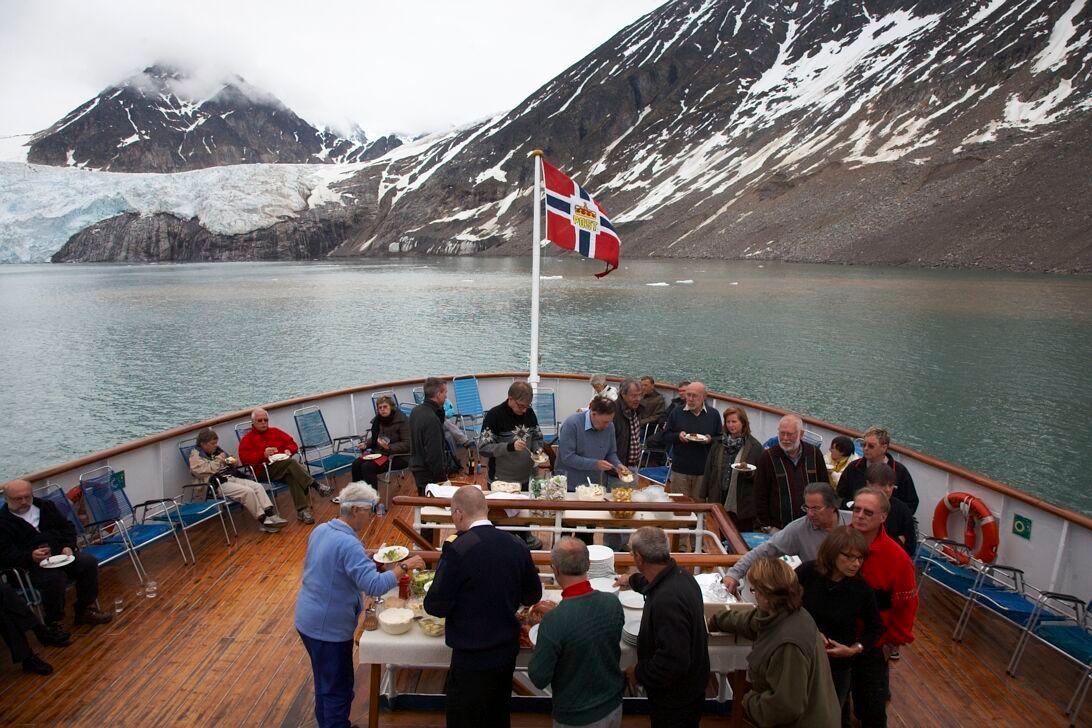In 1893, (back when Norway's rugged coastline was more of an untamed frontier than the photography-friendly wonderland it is today), an entrepreneurial sea captain named Richard With had a revolutionary idea: why not connect these scattered coastal communities with a reliable maritime route?
This wasn’t just about shipping cod and cheese (though plenty of that happened too); it was about knitting together a nation separated by fjords, mountains, and weather unpredictable enough to intimidate even the most hardened of Vikings. Thus, Hurtigruten, the Norwegian Coastal Express, was born, and what began as a lifeline for isolated villages has since evolved into one of the world’s most iconic travel experiences.
A Line for Life and Livelihood
In the late 19th century, Norway’s coastal towns were cut off from one another for much of the year, relying on occasional steamers and brave rowers to deliver essential goods and news. Enter Captain With, who realised that Norway’s stunning yet formidable geography could be tamed with a regular schedule and a sturdy ship. On July 2, 1893, his steamer DS Vesteraalen (pictured) embarked on its maiden voyage, connecting Trondheim to Hammerfest in just 67 hours—an unheard-of feat at the time.
This was no leisurely jaunt. The Coastal Express carried everything from post and provisions to passengers and livestock. It was part ferry, part cargo ship, and part community hub, docking at tiny villages where the arrival of the Hurtigruten ship was the highlight of the day (and probably the week).
World Wars and Weathering Storms


The early 20th century was a turbulent time for the Coastal Express. During World War II, Hurtigruten’s ships became a lifeline for resistance fighters and evacuees while enduring attacks and blockades. Post-war, the service emerged battered but unbroken, a testament to its resilience and importance to Norway.
Through the decades, Hurtigruten adapted to Norway’s modernising infrastructure, remaining relevant even as roads, bridges, and airports began to stitch the country together. It was no longer just about necessity but about the experience—travelling along Norway’s dramatic coastline became as much a treat for the soul as a practical way to get from point A to point B.
The Evolution of an Icon
By the 1980s, Hurtigruten had embraced its role as a bucket-list experience, offering passengers more than just transportation. Cabins were upgraded, dining options highlighted fresh, local fare (think Arctic char and king crab), and onboard lectures delved into Norway’s history, culture, and natural wonders. The transition from cargo lifeline to cruise experience was seamless, and today Hurtigruten is synonymous with sustainable, adventurous travel.
Hurtigruten’s iconic 12-day roundtrip voyage from Bergen to Kirkenes and back takes travellers through 34 ports, countless fjords, and some of the most jaw-dropping scenery on the planet. Where else can you sip hot cocoa while the Northern Lights dance above you or cruise past waterfalls that tumble straight into the sea?
Beyond the Coastal Express

Hurtigruten hasn’t rested on its laurels either. In recent years, the company has expanded further afield, offering voyages to polar regions, including the Northwest Passage and the Arctic Circle. And its commitment to sustainability is as strong as its ships, with new hybrid-powered vessels leading the way in eco-friendly travel.
But despite its global reach, the heart of Hurtigruten remains its Norwegian roots. It’s hard to top the charm of pulling into a tiny fishing village, greeted by locals who still see Hurtigruten as their lifeline to the outside world.
Why It’s Worth the Trip

For history buffs, Hurtigruten isn’t just a cruise—it’s a living part of Norwegian culture. For adventurers, it’s a front-row seat to nature’s most dramatic theatre. And for Cruise Collective members, there’s another reason to book: exclusive 5% discounts on Hurtigruten voyages.
So why not trace the route that’s been trodden for over a century, from the snow-dusted peaks of Lofoten to the windswept expanse of the North Cape? You won’t just be traveling; you’ll be stepping into a piece of history, all while enjoying modern comforts that Captain With could never have dreamed of.
Pack your sense of adventure, a warm jacket, and maybe an extra memory card for your camera—you’re going to need it. Hurtigruten isn’t just a journey; it’s a timeless story waiting to be told, one port at a time.

